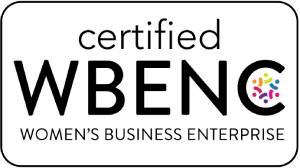Managing Through Impatience
Here’s the challenge: you’re waiting for someone else to finish their work before you can leave for the next appointment. You don’t receive it on time and now you’re running late. You get behind a driver that’s going 10 miles below the speed limit. You feel your body getting tense and suddenly you yell at the car in front of you as if they can hear you. You’re going to be even later!
Does this sound familiar?
We can all be impatient at times and losing our cool can result in headaches and other physical ailments keeping us from top performance.
This impatience, however, can be part of your natural behavioral factors. Your behavioral factors (or hardwiring) operate(s) automatically and it can be your greatest asset or your biggest inhibitor. This hardwiring creates patterns and is often the underlying reason for some of your actions and habits.
Each individual has a specific combination of hardwiring. One of those traits is the expression of patient behavior. While you may or may not have this trait, you will undoubtedly run into someone who does (usually behind you in the checkout line tapping their foot or drumming their fingers.) When you meet someone with this trait, they may come across as intense, fidgety or nervous, depending on the combination of the person’s other hardwiring traits.
In Me, Myself, and Why? The Secrets to Navigating Change, there is a character named Juggler Jane. Jane loves the variety she has in her work and is energized by it. She is naturally wired to triage assignments and does an excellent job prioritizing and re-prioritizing depending on the urgency of the work.
If left unmanaged, however, this natural tendency to respond to the pressures of daily work life can also be a hindrance. Jane will often underestimate the amount of time it takes to complete a project. She puts pressure on herself and others and is always on the go responding to the requests.
Leveraging Strengths
So how does Jane leverage her strengths and manage her hardwiring?
It’s important for someone naturally wired with this trait to work in environments where they have multiple things to do. People who have this sense of urgency do their best work in environments where there are multiple assignments rather than repetitive activities which are boring to them.
In fact, they will be become restless with repetitive, routine activities or work which involves staying in one confined place. If they are in such a work place, they will not be able to sit for long periods of time to complete their projects.
Managing Your Hardwiring
If you’re like Jane, your natural hardwiring has its strengths, like the ability to respond to pressures. If left unmanaged, however, these same traits could prevent you from getting results. There are certain jobs in your company that are best done by people naturally wired to do them. Your hardwiring (and that of who you hire) should be taken into consideration when structuring your business and executing your plan.
Manage Your Tolerance for Delays. You have a tendency to become intolerant with delays and want to get on with the next thing. You build up tension and the need to release it is through action. You put this pressure on yourself and others. But if you don’t have a clear plan, you could be putting a lot of action in many places but not producing any results.
When you feel that tension rising:
Make sure the plan is clear. Establishing a clear vision and plan as well as setting realistic timelines ensures the action you want to take is proactive, aligned, and produces results.
Ask. Simply asking a customer when they need something helps you to manage priorities. Often times, people don’t need something as quickly as you think they do and by asking, you’re managing expectations and your impulse to get everything done immediately.
Pay attention to your physical well-being. If you are hungry, dehydrated or fatigued, this natural hardwiring will become amplified and difficult to manage if you need to. Taking care of your physical basic needs are essential in managing this hardwiring.
Keep it realistic. Individuals naturally wired with this hardwiring will set unrealistic timelines with themselves and others. Give yourself permission to slow down. If you think you’ve identified a timeline, add another week or month to it if possible.
Small business owners naturally wired this way are often impatient with their results often piling on many projects at once. Projects take longer because they are trying to complete all projects at once, often creating a start-and-stop habit. Give each project focus and move on to the next one scheduling enough time on your calendar. When using a schedule for each project, you’ll see the bigger picture allowing you to more realistically gauge the timeframes and create more focused execution.
Remind yourself that impatience rarely gets others to move faster. In fact, depending on their hardwiring, it may actually impede their ability to perform and you’re contributing to added stress. Behaviorally if someone doesn’t move as fast as you do, it may be because they are wired opposite of you. More pressure actually creates an inability to get things done. Instead, back off, set expectations and timelines, and determine an agreed upon update each week. You’ll be surprised at how well they perform when you’re not in the way every two minutes asking for an update.
Allow yourself to let go. You can easily get in the habit of responding to all messages and pressures of the day. Not everything needs to have this sense of urgency but, because of your natural wiring, you can get in the habit of responding to everything. Then, it becomes difficult for you to relax at the end of the day. This stress needs to be released in a healthy way like exercise. It may also be a matter of delegating some of the details to others. Allow yourself to let go. Not everything is a priority or needs to be responded to that day. Releasing your self-imposed response times can be the best solution to managing that natural urgency.
Interacting
When you’re interacting with someone with a high sense of urgency, remember these tips:
Make sure there is an established timeframe. When there is an established timeframe, it helps to manage that sense of urgency. With large-scale projects, make sure there are realistic timeframes established for each of the implementation steps so that that the dates can be managed.
Communicate Often. When there are changes, people with that impatience hardwiring want to know how those changes will affect the results and timelines. When there are changes, communicate what is being done and the adjusted timeline.
Denying this hardwiring for long periods of time actually de-energizes an individual. Getting the hardwiring met and aligning your business growth plans with it, yields increased results more quickly. Understanding your hardwiring is critical to knowing how to stay motivated, what might be holding you back from growing your business, and even what needs to be changed to seal the deal authentically.
_____________________
Lisa Mininni is the Best Selling Author of Me, Myself, and Why? The Secrets to Navigating Change and President of Excellerate Associates, home of The Entrepreneurial Edge SystemTM, the only national developmental and marketing program showing entrepreneurs how to put their personal, client and revenue goals on the fast track. For more information and a free eBook on what you need to grow your business, visit http://www.freebusinessplanformat.com.











